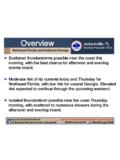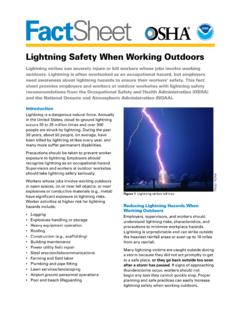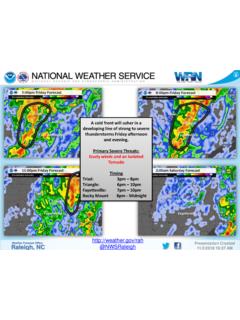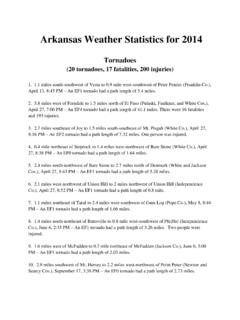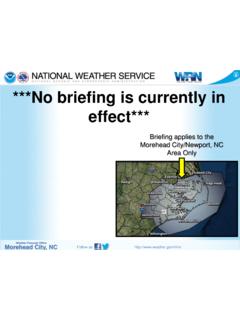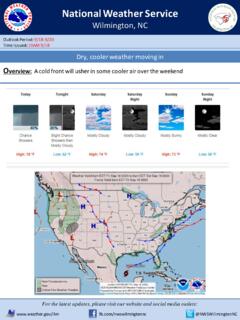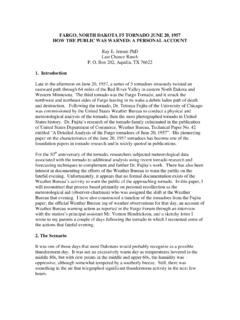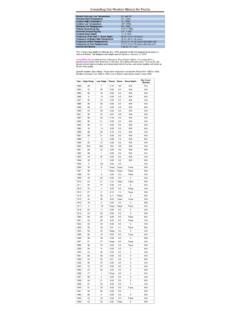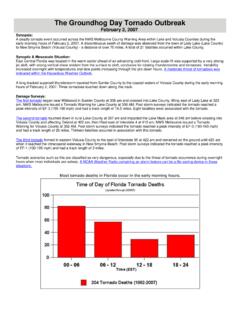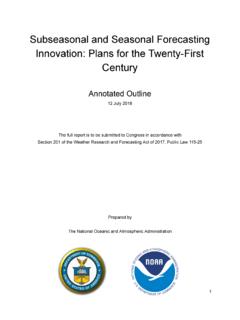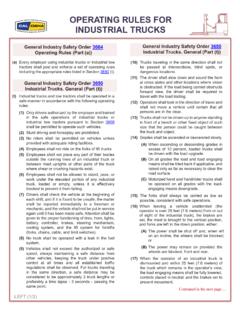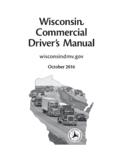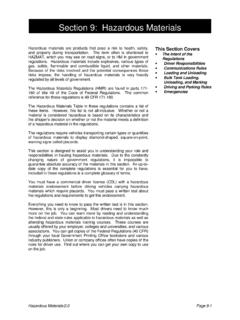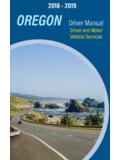Transcription of Weather Spotter’s Field Guide - National Weather Service
1 Weather Spotter's Field Guide Roger Edwards A Guide to Being a SKYWARN Spotter DEPARTMENT OF COMMERCE. National Oceanic and Atmospheric Administration National Weather Service . June 2011. The Spotter's Role Section 1. The SKYWARN Spotter and the Spotter's Role The United States is the most severe Weather - prone country in the world. Each year, people in this country cope with an average of 10,000 thunderstorms, 5,000 floods, 1,200. tornadoes, and two landfalling hurricanes. Approximately 90% of all presidentially . declared disasters are Weather -related, causing around 500 deaths each year and nearly $14 billion in damage.
2 SKYWARN is a National Weather Service (NWS) program developed in the 1960s that consists of trained Weather spotters who provide reports of severe and hazardous Weather to help meteorologists make life-saving warning decisions. Spotters are concerned citizens, amateur radio operators, truck drivers, mariners, airplane pilots, emergency management personnel, and public safety officials who volunteer their time and energy to report on hazardous Weather impacting their community. Although, NWS has access to data from Doppler radar, satellite, and surface Weather stations, technology cannot detect every instance of hazardous Weather .
3 Spotters help fill in the gaps by reporting hail, wind damage, flooding, heavy snow, tornadoes and waterspouts. Radar is an excellent tool, but it is just that: one tool among many that NWS uses. We need spotters to report how storms and other hydrometeorological phenomena are impacting their area. SKYWARN spotter reports provide vital ground truth to the NWS. They act as our eyes and ears in the Field . Spotter reports help our meteorologists issue timely, accurate, and detailed warnings by confirming hazardous Weather detected by NWS radar.
4 Spotters also provide critical verification information that helps improve future warning services . SKYWARN Spotters serve their local communities by acting as a vital source of information when dangerous storms approach. Without spotters, NWS would be less able to fulfill its mission of protecting life and property. 1. Spotter's Field Guide SEVERE LOCAL STORMS. Spotter Reporting Procedures Effective spotter reports are a critical component of NWS severe Weather operations. NWS meteorologists use science, technology, training, experience, and spotter reports when making warning decisions.
5 An effective spotter report is one that is timely, accurate, and detailed. Spotters should use the following guidelines when reporting: Follow the specific reporting guidelines for your area. Remain calm, speak clearly, and do not exaggerate the facts. If you are unsure of what you are seeing, make your report, but also express your uncertainty. Your report should contain the following information: WHO you are: trained spotter WHAT you have witnessed: the specific Weather event WHEN the event occurred: NOT when you make your report WHERE the event occurred, (not necessarily your location) using well known roads or landmarks Immediate, real-time reports, are most helpful for warning operations, but delayed reports are also important, even days after an event.
6 Delayed reports are used for climatological and verification purposes. Weather events should be reported according to the instructions provided by your local NWS office. Here are some general guidelines on what to report. 2. The Spotter's Role Section 1. Tornadoes What damage did you observe? How long was it on the ground? When did it start and end? How wide was it? How far did it travel if known? Flash Flooding Report flooded roadways, rivers and streams, giving approximate water depth. Does the flooding consist of standing water or is it flowing?
7 Is the water level continuing to rise, staying steady or falling? Is the flooding occurring in a known flood prone area? Any damage from the flooding or mud slides? Wall Clouds Report if clouds are rotating and how long they have existed. Funnel Clouds Watch for organization, persistence and rotation. Lightning Only report lightning when damage or injuries occur. Winter Weather Report any occurrence of freezing rain, ice accumulation and damage. How much heavy snow accumulation is there and is there any damage? Do blizzard conditions exist: winds 35 mph or more AND.
8 Visibility mile or less? 3. Spotter's Field Guide SEVERE LOCAL STORMS. Wind Report estimated or measured wind speed and wind damage. Wind speed estimation is difficult. A detailed description of moving objects or damage is often more useful. Details to submit for tree damage: What is the height and diameter of the branch, limb or tree that was broken or blown down? Was the tree healthy or decayed? What type of tree was damaged, , hardwood or softwood? Details to submit for damage to structures. Is the damage to a well-built structure or a weak outbuilding?
9 What is the main building material for the structure: wood, brick, metal, concrete, If the structure is a mobile home, was it anchored down? Hail Report the size of the largest stone and any damage. To estimate size, compare hail to well known objects such as coins or balls, but not to marbles, or measure the hail with a ruler. 4. The Spotter's Role Section 1. Marine hazards Report the following marine events: Waterspouts: you must observe rotation Squall lines Heavy freezing spray Wave heights and winds that differ significantly from forecasted conditions Hydrometeorological phenomena that are not in the current marine forecast, , thunderstorms, dense fog Waves greater than twice the size of surrounding waves Tsunami inundation and any damage Coastal Flooding.
10 Inundation of people, buildings, and coastal structures on land at locations that under normal conditions are above the level of high tide Lakeshore Flooding: Inundation of land areas along the Great Lakes over and above normal lake levels High Surf: Large waves breaking in the surf zone with sufficient energy to erode beaches, move large logs, wash over jetties or exposed rocks, etc. other Environmental hazards Dense fog: visibility mile or less Dust storms: visibility mile or less Volcanic ash accumulation and any damage Any injuries or fatalities as a direct result of Weather 5.
